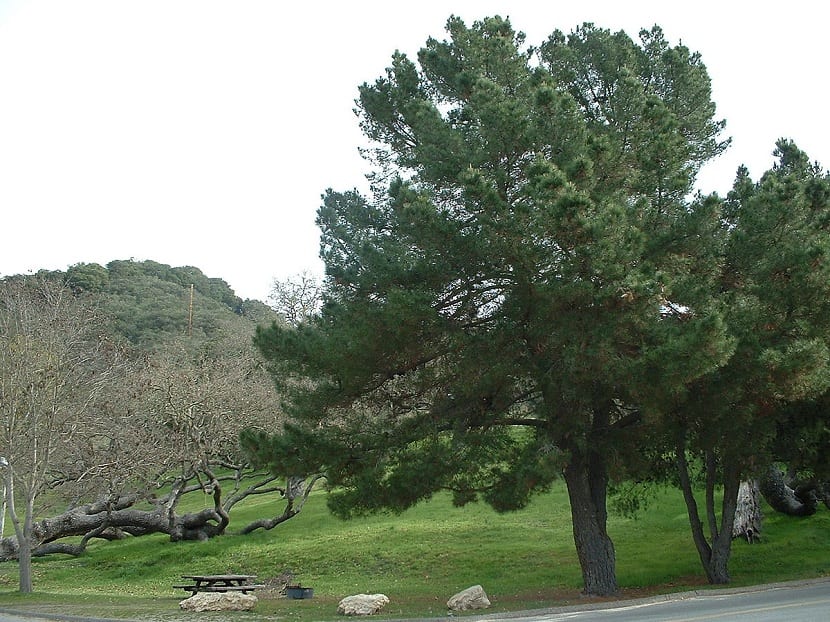
Today we are going to talk about a very common tree that is very useful for improving the quality of forest soils. It is a variety of Pine known as Pinus radiata. Among their common names we find California pine, Monterey pine and distinguished pine. It belongs to the Pinaceae family and has its natural origin in a small area on the coast and the islands of California. It is quite useful for planting in rustic areas and favors the formation of soil.
In this article we are going to show you what are its main characteristics, uses and what it needs to be cultivated.
Key features
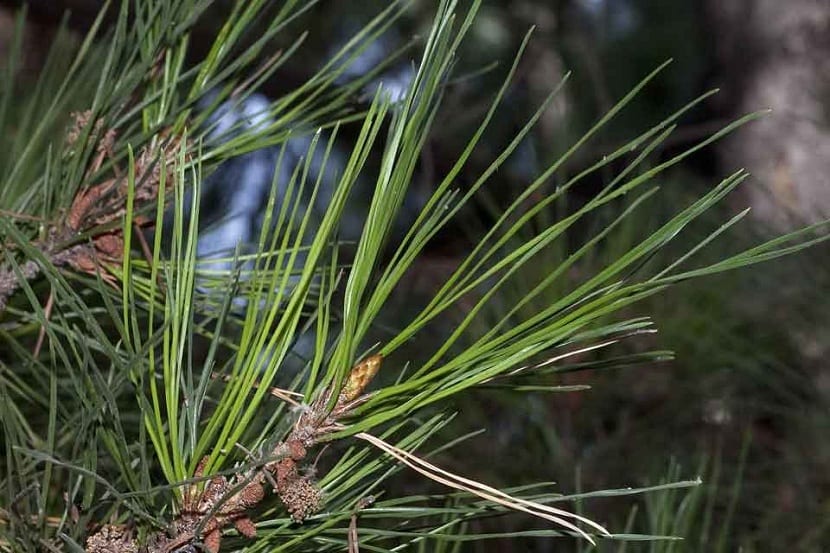
It is a plant that has been spread all over the world artificially for reforestation. This is because its growth is quite fast and it is able to help regenerate the soil. It is evergreen and has a fairly fast turnover rate. Therefore, it is continually shedding old leaves and developing new ones. Old leaves fall to the ground and begin to decompose. These leaves contribute organic matter to the soil and help it to be protected against erosion. It also helps retain moisture.
In Spain it is very frequent that the Pinus radiata for the reforestation of Galicia, the entire Cantabrian Sea and the Basque Country, as long as they are at an elevation less than 500 meters. It is a tree that is between 30 and 40 meters high. The leaves are evergreen and green throughout the year. Being a conifer, its development is quite fast. During youth, it is cone-shaped and dome-shaped as they develop.
The bark is black in color and contrasts with the bright green leaves. These leaves are acicular in shape and are arranged in fascicles of 3 to 3. They are usually between 7 and 15 cm long.
As for its fruit, they are a species of cones known as pineapples that are usually between 7 and 15 cm long and 5-8 cm wide. They appear in groups of between 2 and 5 units and have scales. Its seeds are between 5 and 8 mm in size.
Uses
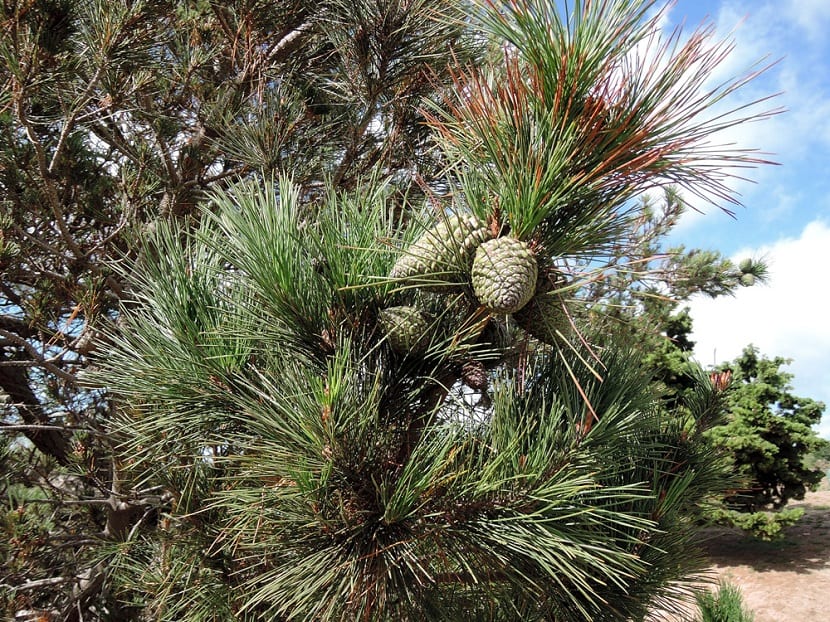
Thanks to its rapid growth, it is used in reforestation. Forests damaged by wildfires need to recover and this pine is perfect for that. However, one of the main problems that occur with reforestations is just that. They want to accelerate the forest recovery process so much that we do not realize that we are changing the flora of our country for pine trees that are not from here. Anyway, this topic gives for another complete article in which this is better detailed.
One of its main uses is to obtain wood for the manufacture of pulp. paper. Its wood is also used to make boxes, mine shoring, for construction, carpentry, wrapping paper and even newspaper. In other places it is planted for its usefulness as a windbreak screen. Being a tree with a high density of leaves and a great height, it is perfect to act as a screen against the wind.
Of course, it is a tree that can perfectly fit in your garden. Although it has a great height, it is not usually too wide, so it will not take up a large space. Nevertheless, It will bring great benefits to the health of the garden. It will provide organic matter, improve the quality of the soil, prevent its erosion and you will be able to get more privacy, reduce the effect of the wind and a perfect shaded area for the hottest days.
Caring for the Pinus radiata
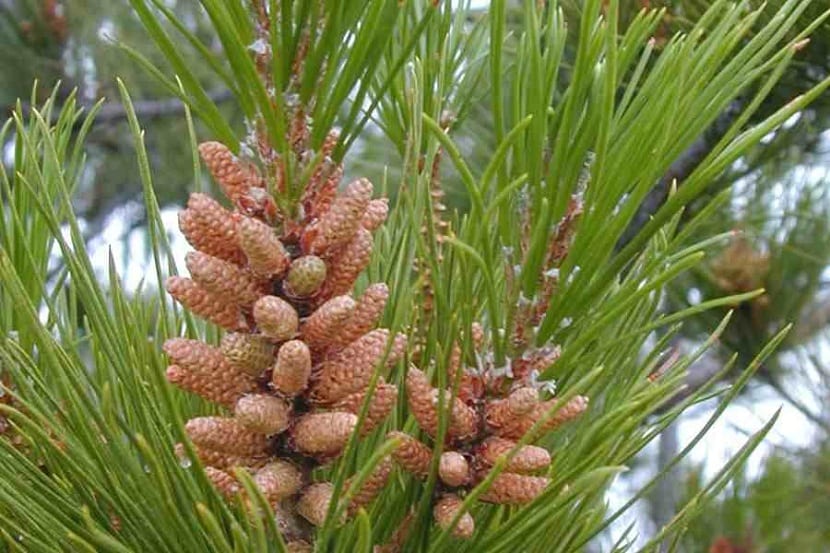
In order to enjoy these advantages mentioned above in your garden, we must know how we have to take care of it. The Pinus radiata it is quite sensitive to cold and frost. This limits the area where it can develop. However, it can withstand some lower temperatures down to -12 degrees as long as they are not too frequent. To avoid this, it is preferable to plant it in mild coastal climates that have abundant atmospheric humidity.
It is quite resistant to the wind, so it will not matter that the area is very affected against the wind. On the contrary, we can use it as a screen to reduce the action of the wind in our home. Not only the wind can reduce but also the noise. Being a very dense tree, it will prevent the annoying noise of vehicles and traffic from continuously penetrating our home.
It requires sandy soils better and with an acid pH. The deeper the soil, the better it can spread its roots for nutrient uptake. The best location that we can put it is outside in full sun. They need many hours of sun to grow and be in good condition. It is advisable to sow it at a safe distance of about 10 meters from any pipes or paved soil so that the roots do not spoil anything or are limited by them.
As for irrigation, it is enough with watering it about 2 or 3 times a week in summer and much less in winter. What is important is that the soil has good drainage to avoid waterlogging the soil. If the water accumulates in excess, the roots will end up rotting.
Maintenance
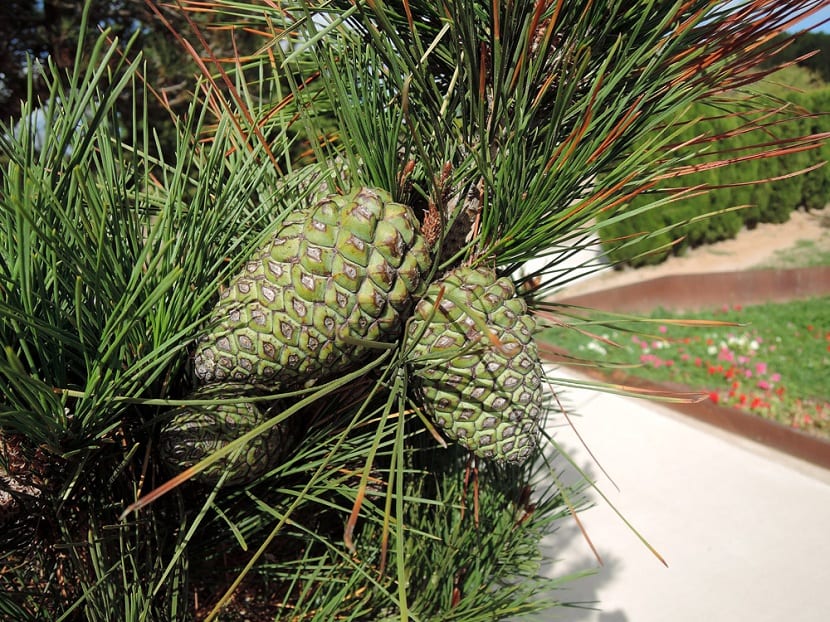
It is good to fertilize it from spring to summer to help it with ripening. You can give it an organic compost as is guano with a frequency of once a month.
He is frequently attacked by the pine processionary. Therefore, it is convenient to take measures so that it does not affect the rest of the plants or those that inhabit the home. These caterpillars are capable of creating significant hives and infecting the entire pine tree from scratch.
If we want to multiply the Pinus radiata, the best is by seeds in spring when the temperatures are higher and favors germination.
I hope these tips help you take care of and enjoy the Pinus radiata.